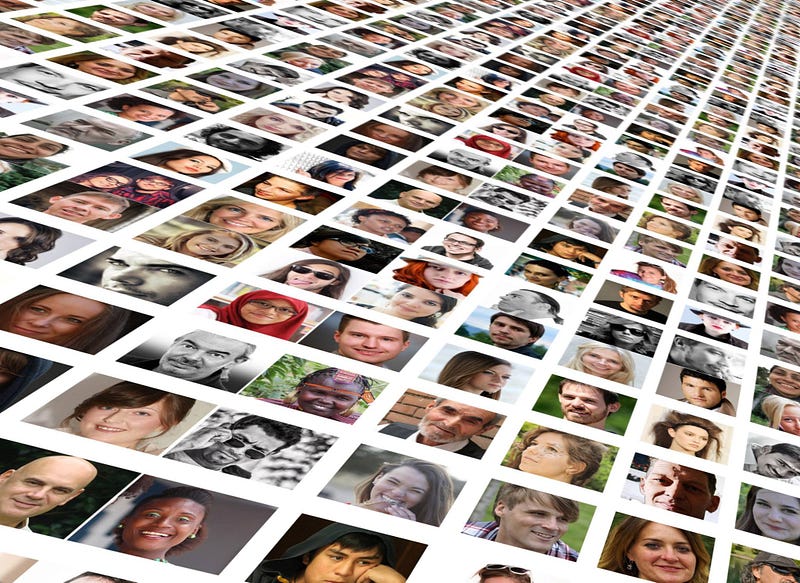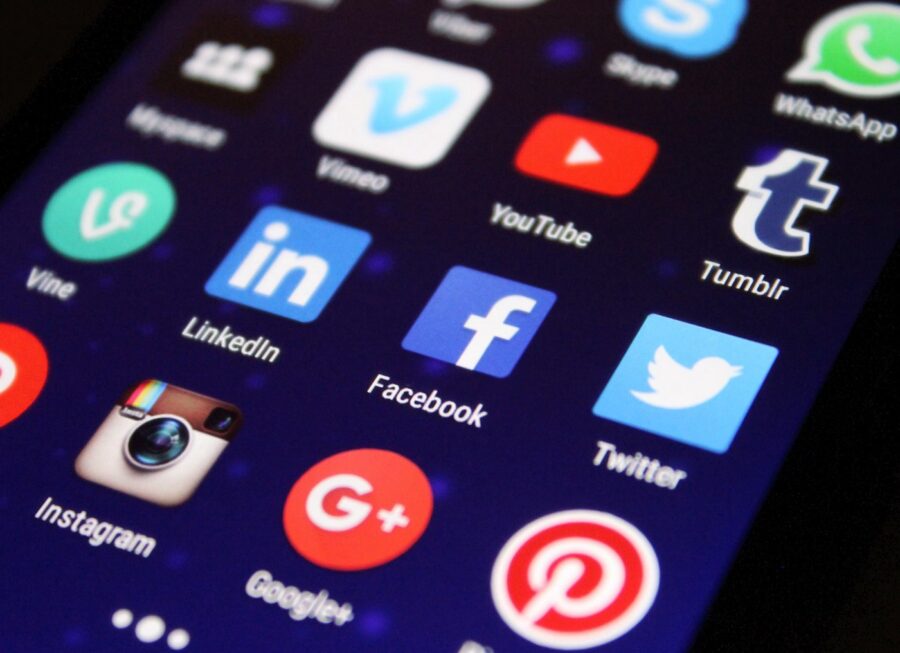Interconnected
Living in a Networked World

The realness of life online — of friendships, romantic relationships and professional connections alike — is questionable, especially on social media.
One can argue a social media presence creates touch points between friends, family and colleagues — removing geographic barriers and bringing people into what may as well be the same room. On the other hand, the need to connect is primal, and social media creates connections between billions of people who don’t even know each other.
According to a global study by We Are Social, a digital social media, public relations and marketing agency, there are more than 2.2 billion users on social media.
So how many of those are creating relationships, connections and networks that translate into the real world? For students, this can be a particularly difficult question to answer.
At the University of Missouri, nearly 100 percent of students are on Facebook says Margaret Duffy, a professor and chair of strategic communication at the MU School of Journalism. Overseeing a study on students using the social channel, she noted that how Facebook users use the site makes a difference in how they respond to it. “Facebook can be a fun and healthy activity if users take advantage of the site to stay connected with family and old friends and to share interesting and important aspects of their lives,” Duffy said. “However, if Facebook is used to see how well an acquaintance is doing financially or how happy an old friend is in his relationship — things that cause envy among users — use of the site can lead to feelings of depression.”
Affecting one’s mood is certainly an effect that translates into the real world — and it’s up to users to determine the positive or negative impact they allow social media to have on their lives.
Arizona State University student Derek Houston-Brown actively avoids the use of social media on a daily basis to focus on enjoying his daily life.
“I don’t see why we have to be so involved in each other’s daily lives and snoop around when there’s so much to live for in your own life. It’s just better to avoid it all if you’re seeing someone else’s life and start to second guess yourself or feel envious — but it’s great for catching up with distant family or old friends.”
Conversely, Joanna Mrsich, a student at the University of La Verne, uses social media to share many of her life moments with her friends and followers. She uses at least four social channels to share the daily on goings in her life — including study time, hanging out with friends, debate team trips, adventures and even silly things like mismatching socks. “I have friends that I see face to face each day, but exposing my life online — to those I choose to befriend — is just another way of sharing moments that are silly, educational, sad and fun with friends or family who aren’t there with me,” said Mrsich. “We connect and comment from as close as the next room to across the country in seconds — and it’s all in good fun.”
Social media for students can also be harnessed to establish effective connections that go beyond just friendship. According to an article in the Huffington Post, “Although some students increasingly feel a need to disconnect from social media, universities and their students are also trying to find ways to use technology to reach those who are struggling — from Facebook support groups, to mental health apps, to online therapy games.”
Beyond the personal use of social media to establish friendships, share news, provide support or connect with family — activities on social create an accessible online reputation for people to make snap judgments about who a person is, what they do, etc.
This online reputation certainly translates into the real world and can be thought of as a personal brand. Whether a student is starting college for the first time, transferring to a university or seeking a graduate degree — creating a real picture of their life online can be especially useful in the admissions process.
According to an article in U.S. News and World Report, the digital version of students, or the personal brand that is showcased on social profiles, needs to match the persona students will present to an admissions team — especially for those seeking an MBA. The editorial notes, “The articles and thoughts you share, the comments you make and the professional affiliations you display will provide schools with a multidimensional view of who you are, as well as support your expertise and passion for a particular industry or activity.”

For instance, if an admissions essay notes how a student is actively volunteering, fundraising, traveling, etc. — showcasing images and sharing content related to those activities in online profiles is key to rounding out a personal brand.
However, both students and professionals must be cautious of what gets posted online and actively check on their online reputations. Pew Research conducted a survey and found that only 56 percent of Internet users have used a search engine to look up their own name to see what information about them is available online.
Catriona Pollard, author of From Unknown To Expert, a step-by-step framework designed to help entrepreneurs become recognized as thought leaders and influencers in their field, provides tips in the following Huffington Post article on how to maintain and/or improve an online image.
“By far the best strategy for protecting your personal brand is to build a strong reputation that will help you weather any negative feedback others may have of you or maybe even an unintentional mistake,” says Pollard.
What gets posted online can make or break connections that have been made in the real world, so students should take heed of what gets posted online at all times. An article in Entrepreneur notes how deleting old, negative social-media posts that can come back to haunt you is an effective way to control an online brand.
“The mutual relationship between career success and personal branding is a truly unique dynamic that, when understood, has the potential to launch a person to new heights,” says CEO of Saltzman Enterprise Group, Barry Saltzman, in his Fast Company article, Why Personal Branding is Essential to Career Success.
Reaching new heights entails making valuable, networked connections along the way. During a student’s transition to the professional world, there are notable changes in how social media is used — and the impact on a student looking to enter the work field can vary depending on their dedication to using social media for online networking.
According to William Jackson, an instructor at Edward Waters College teaching educational technology and social media, “A college [and] university undergraduate must sell themselves to the world they want to enter.”
Who a student networks with while “selling themselves” can affect their future in unknown, but hopefully positive, ways. “The concept is to plant the seeds before you need to harvest them,” says Heather Krasna, director of career services at the University of Washington’s Evans School of Public Affairs. “By the time you’re about to graduate, it’s getting to be a little late in the day to start building those connections.”
Students can begin real-world networking with social media — especially with a professionally focused site like LinkedIn.
“Technology allows for transcending physical networking and allows a digital platform using platforms like LinkedIn to make connections that may have not otherwise occur,” continued Jackson. “Overlooking [the] virtual networking that social media provides can put students at a disadvantage when they are required to network and collaborate.”
From finding a mentor, to securing an internship or simply getting outside a bubble — a U.S. News & World Report article indicates, “Too many students make the mistake of thinking they can avoid LinkedIn until after college, but the smart move is to use it now to track the network you’re building.”
LinkedIn allows potential employers to recruit by searching skills, hobbies, community and volunteer projects, education, previous employment and membership in various associations — and Jackson notes that using LinkedIn to showcase your skillsets is akin to building a solid foundation for a house for a student’s career path.
Students should be mindful though, a Jobvite survey indicated 54 percent of respondents responded negatively to spelling and grammatical errors on LinkedIn pages, just as they would if they found provocative images on Facebook.
The impact on the workflow of recruiters and how companies are expanding their online brand presence to attract top talent is also significant. According to the 2015 LinkedIn Global Recruiting Trends Report, the leading recruiting tactic in the U.S., Canada, Mexico, Brazil, India and South Africa centers around social media — and social networks are becoming the preferred channels for companies to promote their talent brand messaging.
The report mentions how “the growth of social professional networks as a source of quality hires mirrors the growth in membership of platforms like LinkedIn, which rose from 100 to over 300 million members over the last four years.”
The social networking phenomenon has captured a large part of the Internet’s audience. A global Pew Research report indicates, “65 percent of adults now use social networking sites — a nearly tenfold jump in the past decade.” Long gone are the days choosing to use either Facebook or MySpace — and instead, Pew Research has also found that multi-platform use is on the rise with 52 percent of online adults using two or more social media sites.
From Facebook for personal social networking to Twitter for content curation to LinkedIn for professional networking to newer, more popular avenues like Instagram, Pinterest, Vine and Snapchat — students should consider what they post online to help create or maintain noteworthy relationships made in the real world. As The Department of Homeland Security notes, “Once a user posts something online, it never goes away even if they try to delete it. Sharing information online is a tool, but one people should always use with caution.”
Ultimately, the “real” outcome of connections made on social media is unique to individuals and how they manage their activity online. To some, a professional social network may be more important — but it’s up to an individual to decide if having a professional and/or personal presence online truly enhances any part of life.
Justine Mrsich was a news writer and editor on the staff of the student media at Mt. San Antonio College. She transferred to Cal State Fullerton and received her communications degree with an emphasis on public relations. She now works as a public relations account executive at Lages & Associates in Irvine, Calif.







